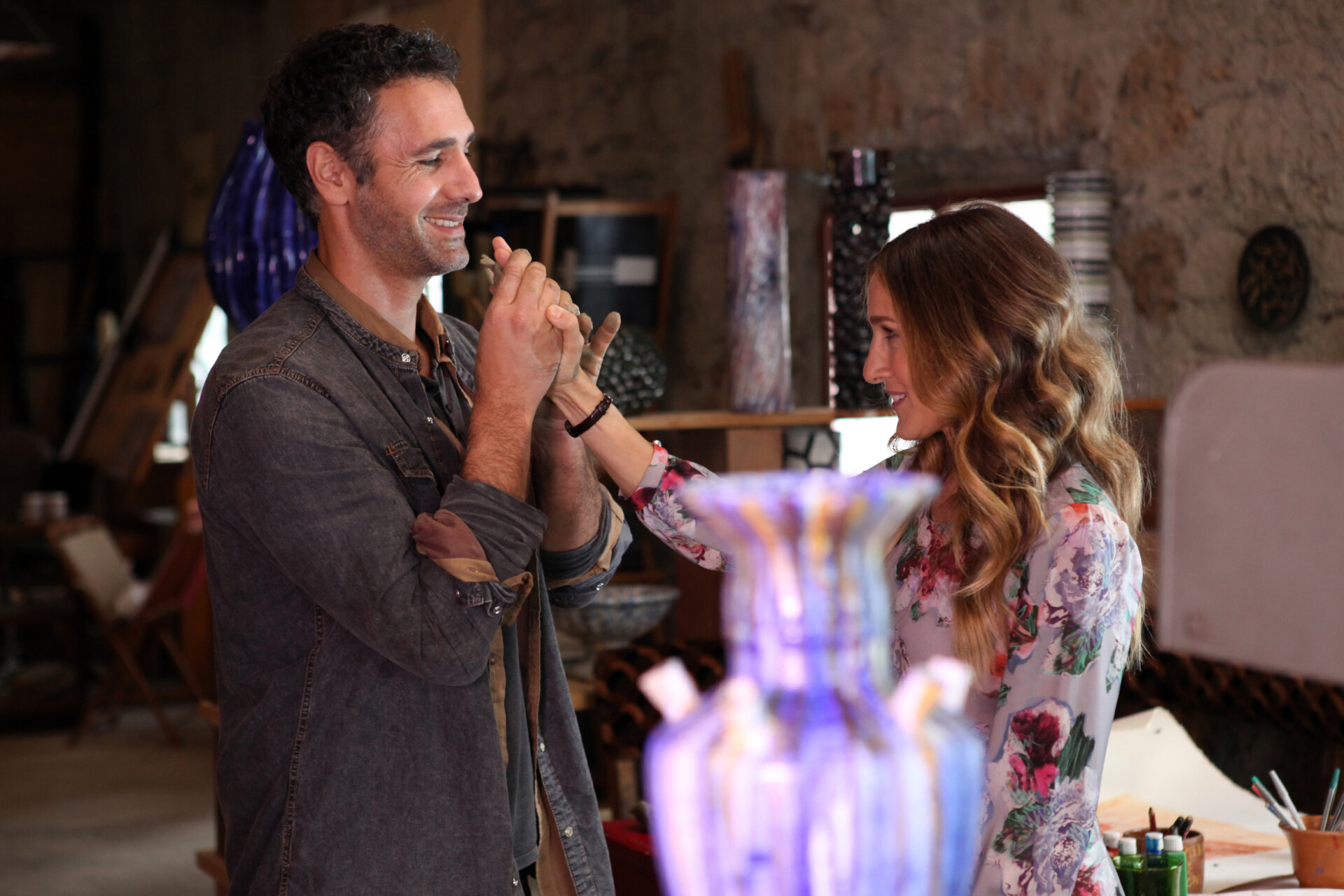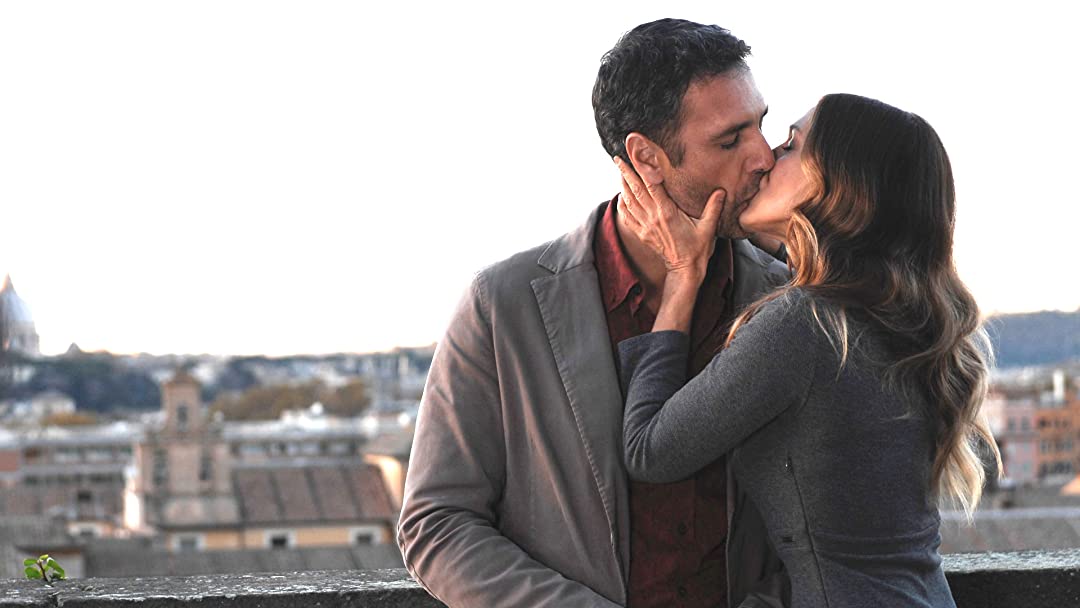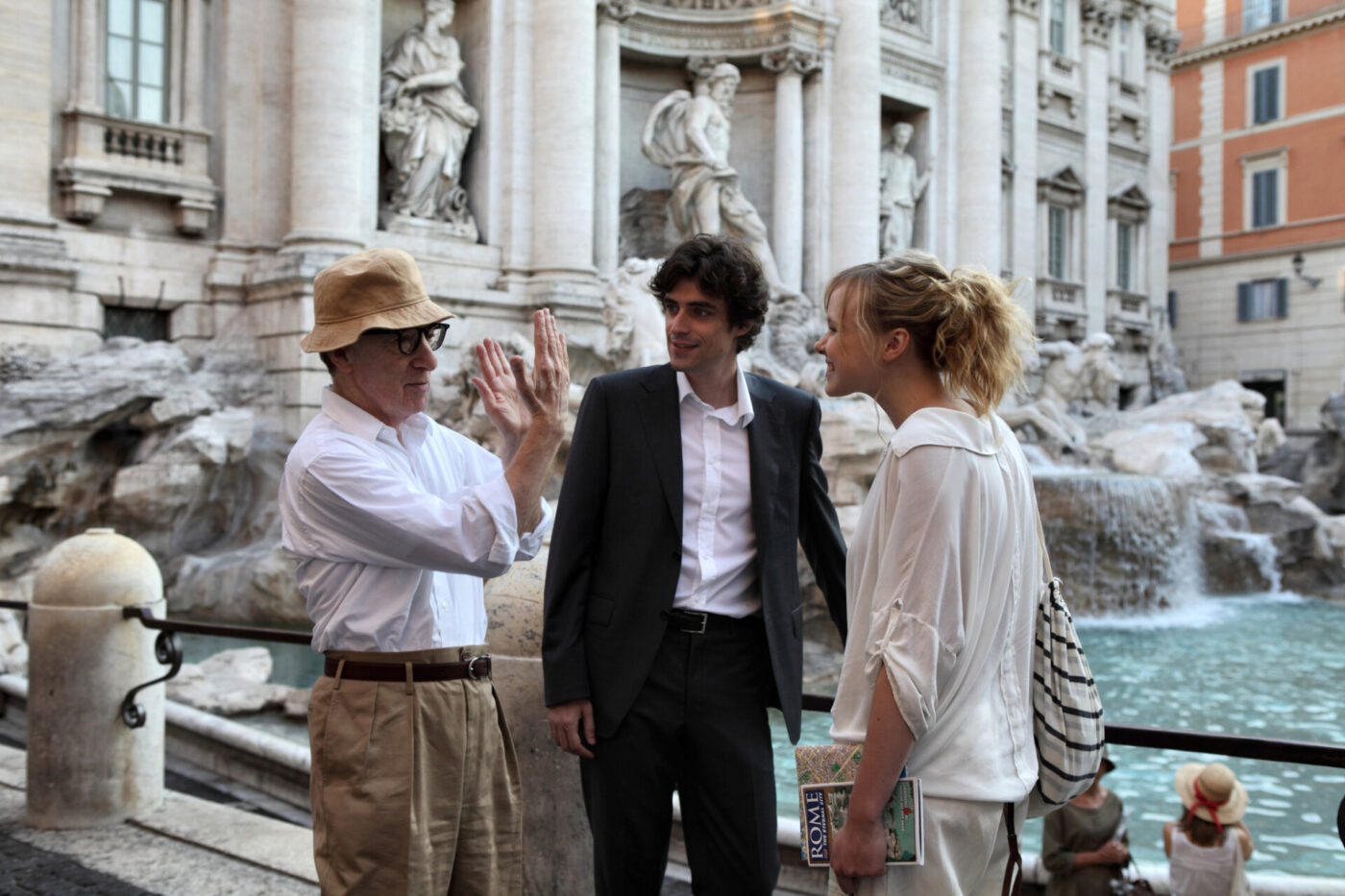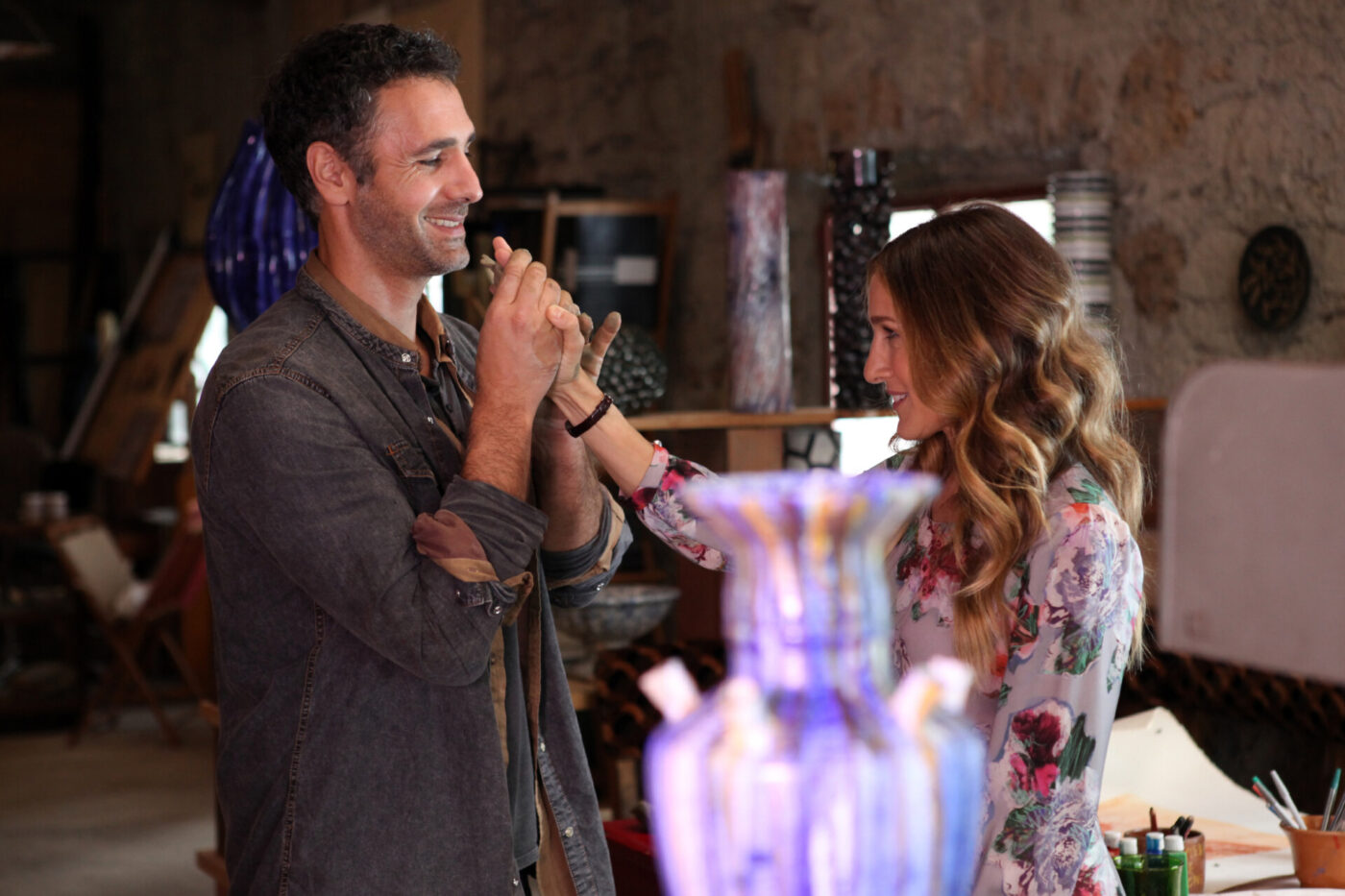Under the Tuscan Sun (2003)
That trope of a woman leaving her husband to find herself in Italy? It shines in Under the Tuscan Sun, a 2003 rom-com about Frances (Diane Lane), a San Francisco writer who gets a divorce and decides to buy a rural villa in Tuscany in order to change her life. On her journey of re-discovery, she encounters a colourful crop of local characters (read: over-the-top Italians who love to wink and gesticulate), including the handsome Marcello (Raoul Bova), who reviewer George Erbert described as “obviously ripped from the bodice of a romance novel.”
While offering pure escapism thanks to the stunning background, the film’s cheesiness and cliches are ultimately a little hard to stomach. There’s limoncello drinking in Positano, lots of questionable small-town living vignettes with people dressed in coppola hats and suspenders (it’s 2003, not the 1940s!), a side-saddle motorino ride with a policeman (what?), and lines like “I am in Italy, I can hire the muscular descendants of Roman Gods!” (when Frances tells her friend back home she will seek help to renovate the house). The list could go on.
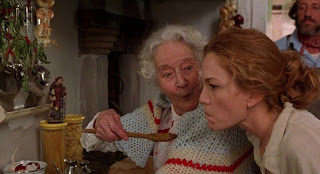
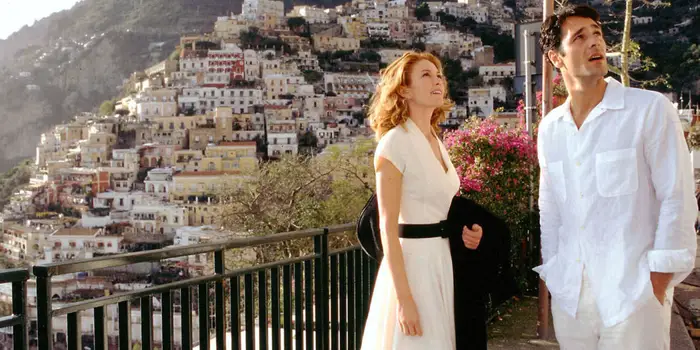
Letters to Juliet (2010)
Another Italy-set soppy melodrama, Letters to Juliet tells the story of Sophie, a young American woman who, while travelling to Verona with her too-busy fiance (Gael Garcia Bernal), visits the house allegedly inhabited by Shakespeare’s Juliet. There, she discovers a wall where lovelorn women leave “letters to Juliet”, asking for advice. Finding one such letter from the 1950s, Sophie decides to write to its now-elderly author, Claire (Vanessa Redgrave), who then sets out to find her long-lost lover Lorenzo–an adventure on which she’s accompanied by her disapproving grandson (Christopher Egan) and Sophie. You might guess where this is going–the ending is pretty obvious from the setup–but it’s not the thin plot that grates us as much as the broad stereotypes. The latter include reckless driving by the Italians along the winding Tuscan roads; overtly suggestive acting by almost all the male extras–from the Speedo-clad, gold-chain wearing old boatman creepily eyeing all the female passengers that get off his boat to the restaurant owner blowing sleazy kisses to Claire (Italian men are so cheeky right?); extreme gesticulation and an Italian-English accent laid on so thick by all the local characters it’s almost funny. Italy sure looks great on screen though.
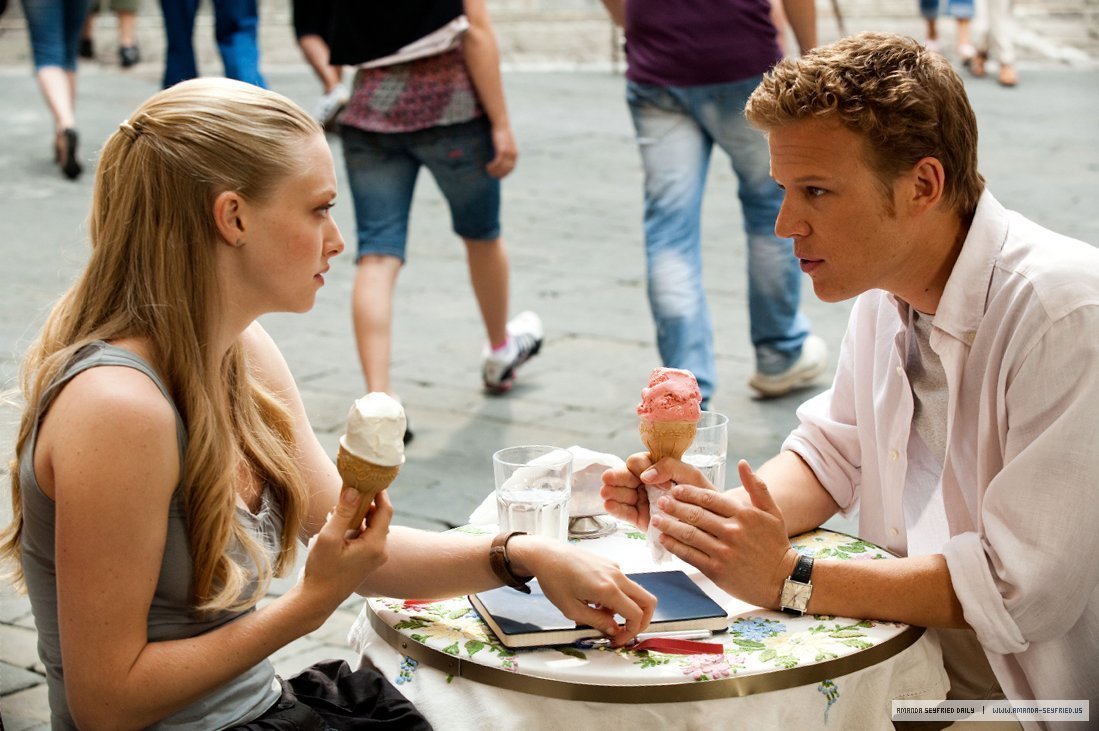

Love & Gelato (2022)
If the opening scene (and the title!) of Love & Gelato isn’t enough to make you stop watching right there and then–we see a flower-filled three-wheeled Ape car casually driving by St. Peter’s Square, which is pure stereotype on steroids–the done-to-death tropes that fill the entire film might. Vespa riding at midnight over bumpy sampietrini, even though you don’t really know how to drive: Check. Over-the-top Italian accents from the English-speaking characters: Check. Lines like “Pizza, cannoli, hot Italian boys, stat!”: Check (FYI: cannoli are Sicilian, not especially Roman). Nonnas that get mad because you refer to gelato as ice cream: Check.
We could continue, but we won’t. The story of Lina (Susanna Skaggs) who travels to Rome before her first year of university to live out her mother’s final wish for her–to have a transformative trip just like she did in her youth–is banal to the max, full of formulaic setups and just filled with any coming-of-age movie cliché known to (Italian) man.
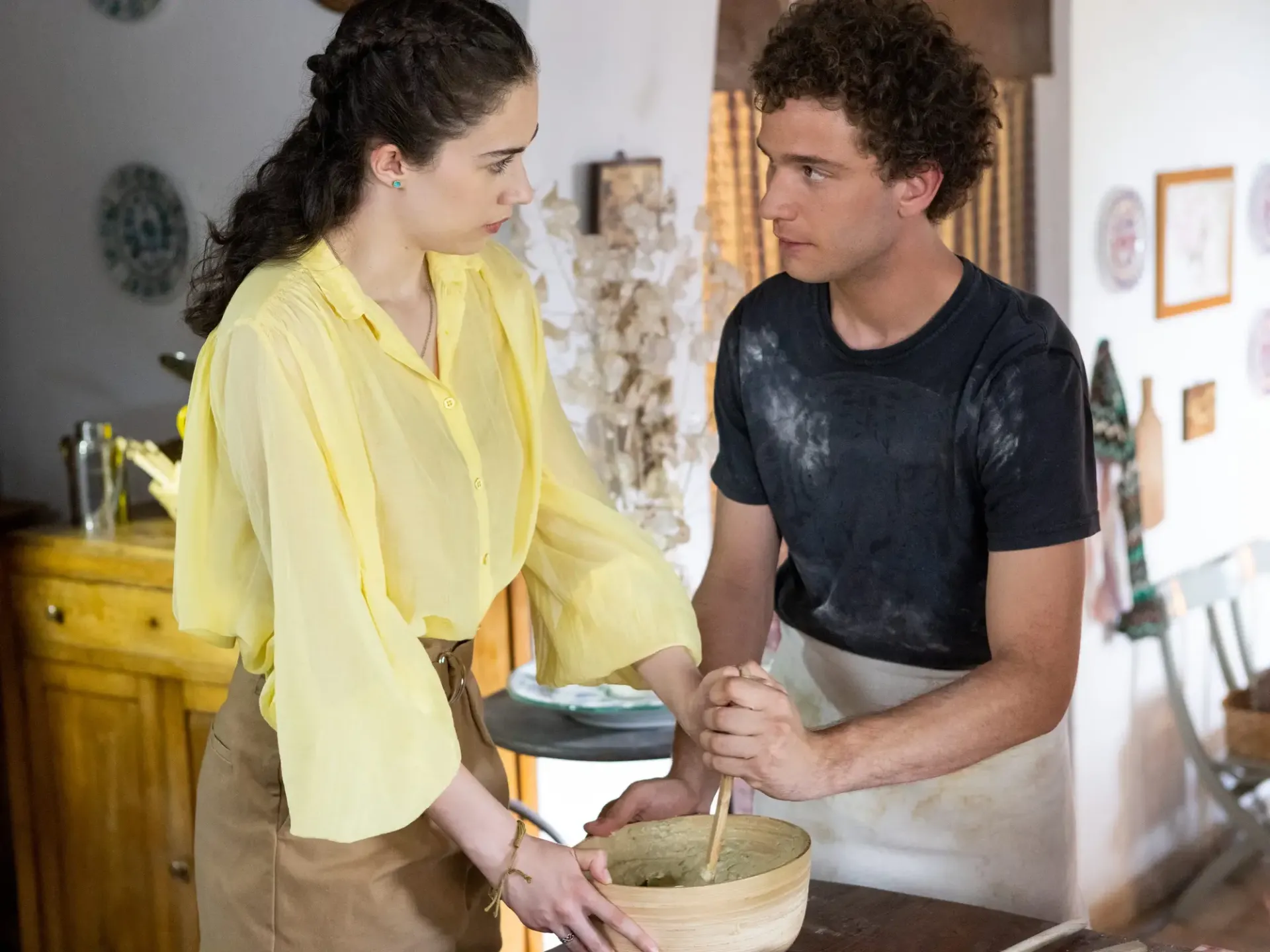
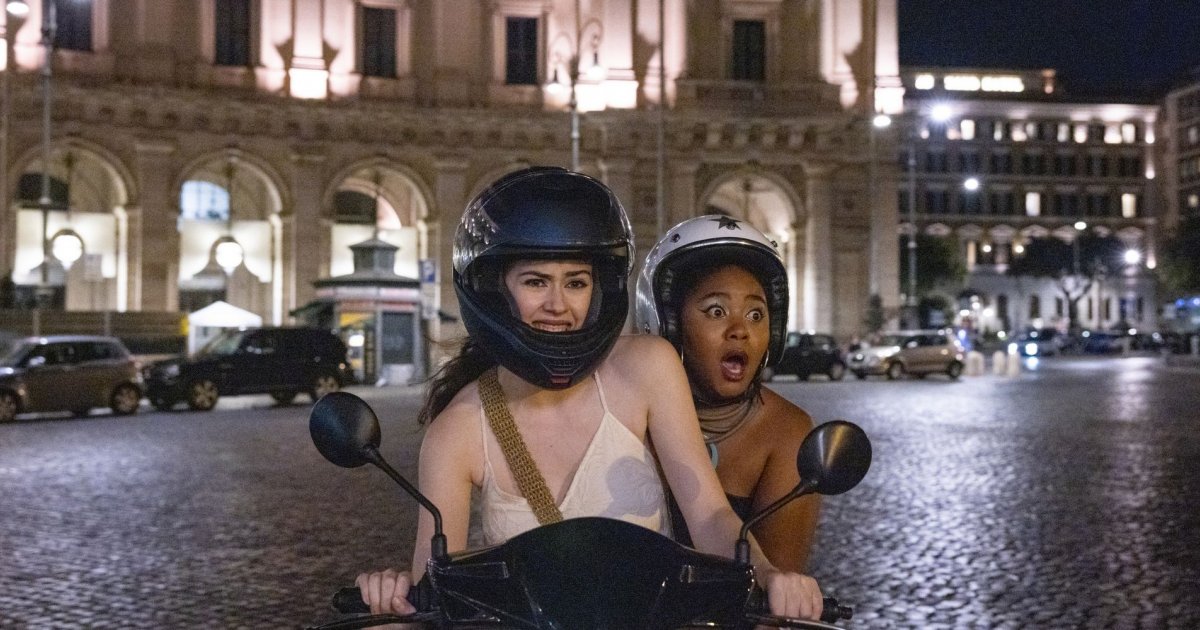
Cinepanettoni (1983 to today)
This might stir some controversies (many Italians love these films) but we find cinepanettoni–farcical Italian comedies usually released in Italy during the Christmas period–pretty excruciating to watch when it comes to their representation of Italy.
The genre has been around since 1983, when it debuted with Vacanze di Natale, and has remained pretty much unchanged ever since. That means the same gags, often recycled from movie to movie; the same cast of actors led by Christain de Sica and Massimo Boldi (the duo stopped working together in 2006 and started making their own separate cinepanettoni); and the same demented plots based on crass jokes, sexist innuendos and the portrayal of the average Italian as a basic idiot. Some recurring devices: a beautiful, often half-naked woman–even when it’s freezing outside—who serves as a pure object of desire (generally a top model or bombshell type actress, from Megan Gale to Sabrina Ferilli); betrayals between married couples and friends, and wild parties that end up destroying hotel rooms or whatever place the movie is shot in. There’s always one character who repeatedly cheats or just can’t keep his eyes off women, a bumbling idiot who tries to fix things only to make them worse, and alienated children or teenagers who only care about money, status and clothes. Evidence includes: Natale sul Nilo (Christmas on the Nile), Natale a New York (Christmas in New York) and Natale a Beverly Hills (Christmas in Beverly Hills).
That’s exactly what we don’t like about them: while not always set in Italy, cinepanettoni are unfunny parodies of the stereotypical Italian lifestyle. Watch at your own peril.


To Rome with Love (2012)
Rotten Tomatoes sums up To Rome with Love as “Woody Allen cobbling together an Italian postcard of farce, fantasy, and comedy with only middling success.” That’s right on the money. Following four different stories in the Eternal City–a well-known American architect reliving his youth; an average middle-class Roman who suddenly finds himself Rome’s biggest celebrity; a young provincial couple drawn into separate romantic encounters; and an American opera director attempting to put a singing mortician on stage–the movie offers nothing but a series of recycled picturesque cliches around half a century old, lame skits and trite stereotypes. Examples include the Roman policemen who direct traffic in pristine white gloves and white helmet, which is more 1950s than 2012; the accordion-based folk Italian music in the background of one too many scenes; and the attempt to cook “like the Italians” by pouring an entire bottle of wine into a pasta sauce, which sounds as wrong as putting pineapple on a pizza. The only moment that feels somewhat relevant to the modern viewer? The illegal sneaking into the Roman baths at night by four of the characters, which is a pretty accurate–and annoying—reminder of how tourists often treat the Eternal City’s landmarks as their own playground, rather than sites to be cherished.
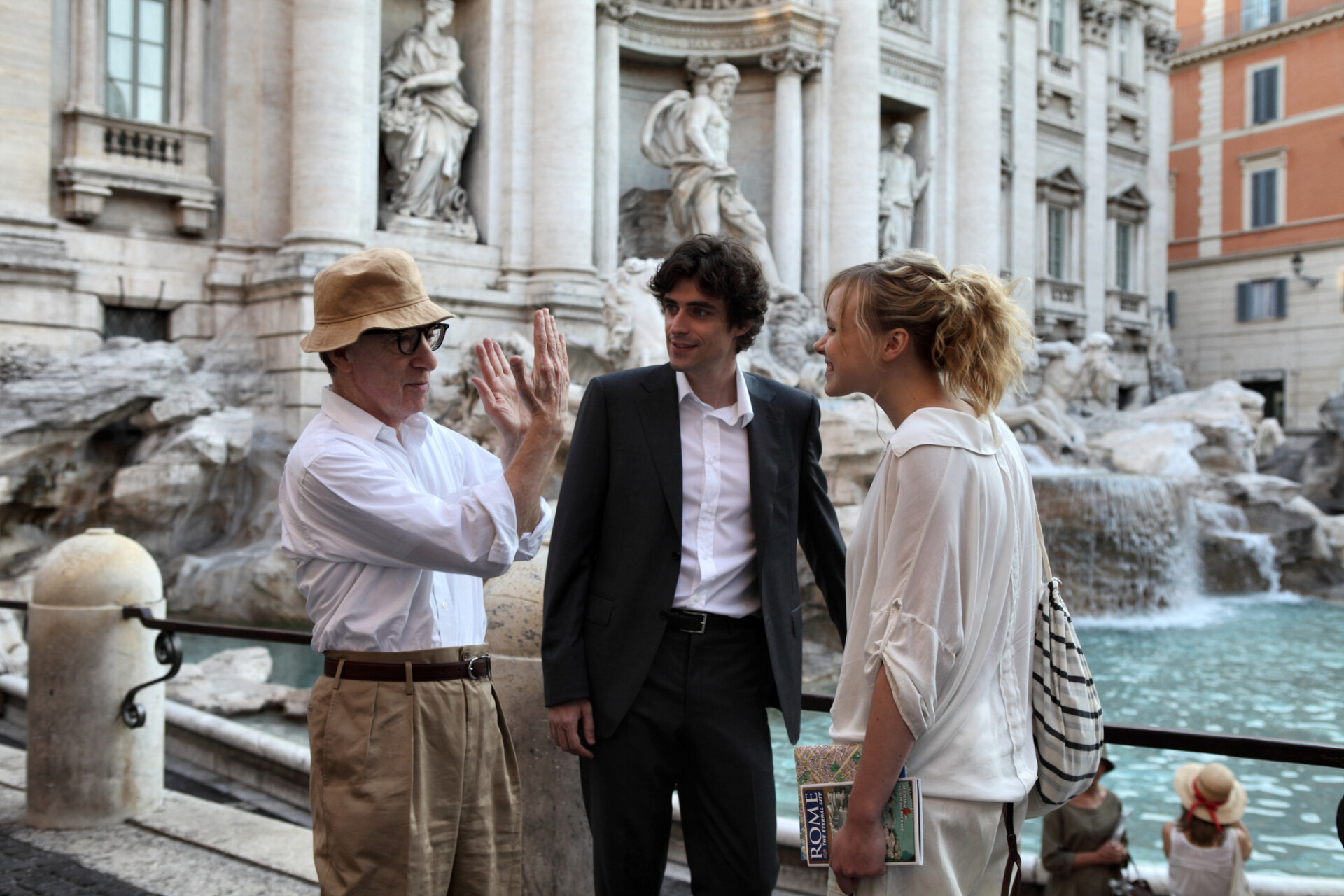
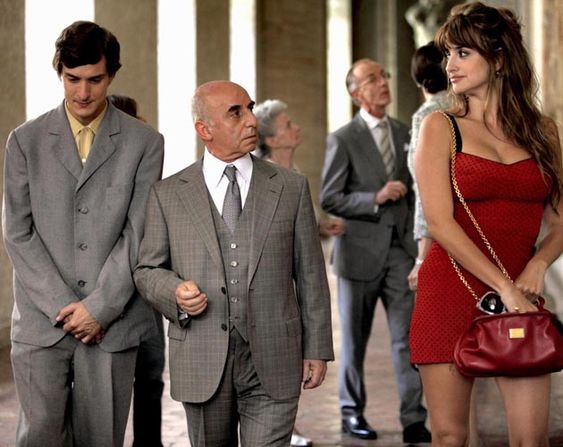
Eat, Pray, Love (2010)
All things considered, the Italian part of Eat, Pray, Love–yet another movie about self-discovery!–isn’t the worst. Watching Julia Roberts set off to Italy to wander around piazzas and eat a whole lot of pasta, pastries and gelato is almost envy-inducing. Except, of course, for the fact that everything is overly exaggerated (we still can’t get over the crowded coffee scene at La Tazza d’Oro. It is never like that!), and that the Italian characters are walking ethnic stereotypes (the landlady showing her crumbling apartment, the Italian teacher-turned-friend who waxes lyrical about how Italians live their best lives at all times). And then the food: yes, Italian food is great, but we don’t actually just eat pizza and pasta, Julia. There’s so much more than carbs to our diet.
As much as Rome and Naples look great in the movie, the way in which Liz (Roberts) has a sensual, awakening experience through food feels stereotypical, ultimately forced and pretty vapid (as does the rest of the film once it moves to India and Bali).
A case in point? The scene in the Neapolitan pizzeria (Antica Pizzeria da Michele) where Liz is diving into her cheesy margherita pizza but her friend Sofi (Tuva Novotny) is upset: she can’t enjoy the pie because she has gained weight and put on what she calls a “muffin top”. Liz shrugs off her friend’s insecurities by saying she’s also got a muffin top, then asks Sofi if a man has ever asked her to leave upon seeing her naked. She continues that she’s tired of counting calories and wants to eat whatever she likes. Although it’s true that there’s less of a culture of calorie counting in Italy than in the U.S. (and it’s true that the Italian mentality towards eating has changed some women’s body images), Liz problematically prioritises how men see women’s bodies over women’s own self perception; overall, through this scene and others, the movie fails to understand the below-the-surface relationship Italians have with food.
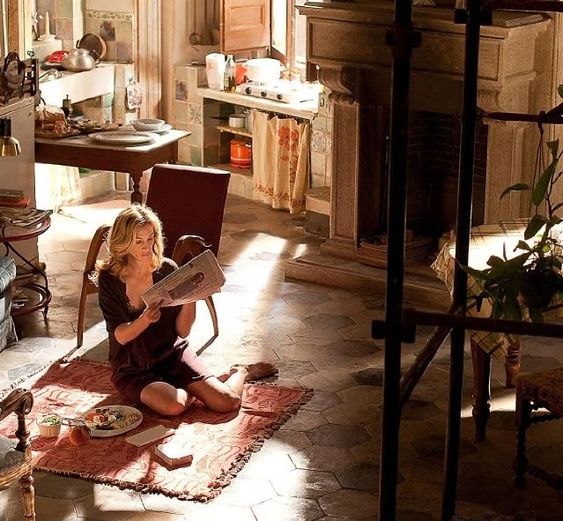
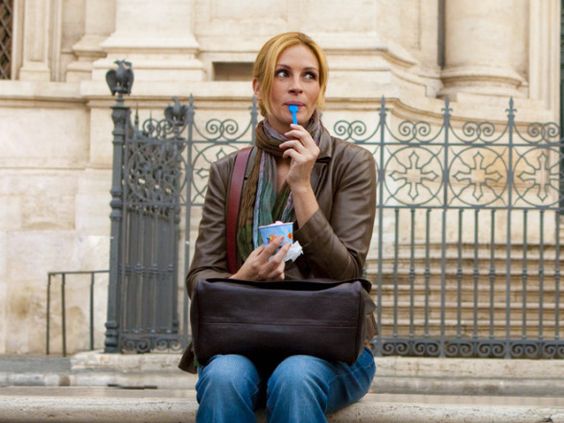
All Roads Lead to Rome (2015)
The roads that lead to the Eternal City are filled with cliches in this 2015 rom-com starring Sarah Jessica Parker as Maggie, a single mother who reconnects with her old flame Luca (Raul Bova) on a trip to Tuscany, after her rebellious daughter (Rosie Day) and the man’s mother (Claudia Cardinale) run away together.
Lots of the scenes are in Italian with no subtitles (which adds a fair bit of confusion); the picturesque Tuscan scenery is something we’ve all seen a thousand times before; and the classic American stereotypes about Italy follow the characters all along their road trip, ultimately making this film feel more like a farce than anything else. Among the worst bits: “Italians are so laid back!” says Maggie upon arrival in the Bel Paese (how many times have we heard this before?). The old yellow Panda she’s given to drive after failing to provide her car rental reservation (turns out we do follow some rules, Maggie!): nobody drives those anymore. Then there’s the line “sexting people is a form of politeness here,” also courtesy of Maggie, when her daughter finds her exchanging flirtatious messages with Luca.
Maggie flies to the boot-shaped country to show her daughter what made her fall in love with Italy on her first visit decades prior, but neither us nor she get to really see the reasons–which, in real life, are more multitudinous and complex than any of these movies could dream of.
